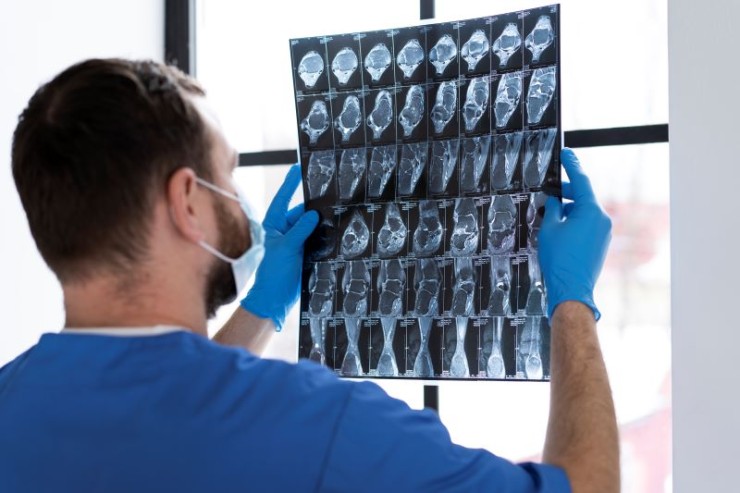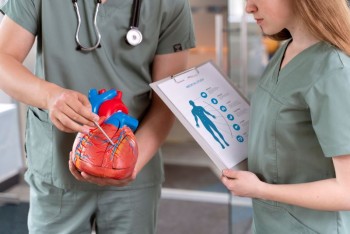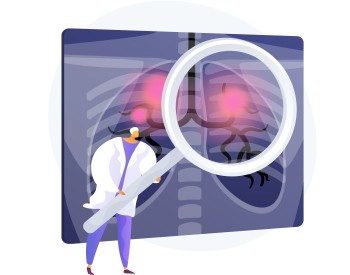
CT Angiography of Upper or Lower Limbs stands as a specialized imaging procedure that provides detailed insights into the vascular structures of the extremities.
CT Angiography of Upper or Lower Limbs in India with Cost
CT Angiography of Upper
or Lower Limbs: Unveiling Vascular Precision
Introduction
Exploring Vascular Insights with CT Angiography of Upper or Lower Limbs
CT Angiography of Upper or Lower Limbs stands as a specialized imaging procedure that provides detailed insights into the vascular structures of the extremities. This comprehensive guide aims to elucidate the significance, procedure, and applications of CT Angiography of Upper or Lower Limbs, offering a thorough understanding of its role in vascular diagnostics.
Understanding CT Angiography of Upper or Lower Limbs
What is CT Angiography of Upper or Lower Limbs?
CT Angiography of Upper or Lower Limbs is an advanced imaging technique that utilizes computed tomography to capture high-resolution images of the vascular structures in the arms or legs. This specialized scan allows healthcare professionals to assess blood vessels, detect abnormalities, and make precise vascular diagnoses.
The Significance of CT
Angiography of Upper or Lower Limbs
Precision in Vascular Imaging
CT Angiography of Upper or Lower Limbs plays a pivotal role in achieving precision in vascular imaging, offering detailed views of blood vessels to identify conditions such as arterial stenosis, aneurysms, or thrombosis affecting the extremities.
Evaluation of Peripheral Arteries
With high-resolution images, the scan facilitates a comprehensive evaluation of peripheral arteries, assisting healthcare professionals in diagnosing and planning appropriate interventions for vascular disorders.
The Procedure: A Step-by-Step Guide
Patient Preparation
Patients undergoing CT Angiography of Upper or Lower Limbs typically require minimal preparation. It's crucial to communicate any allergies, kidney issues, or relevant medical history to the healthcare team.
Contrast Administration and Image Acquisition
Contrast dye is administered intravenously, and the CT scanner captures multiple high-resolution images, providing detailed cross-sectional views of the vascular structures in the upper or lower limbs with enhanced contrast visibility.
Applications of CT Angiography of Upper or Lower Limbs
Detecting Peripheral Arterial Disease
CT Angiography of Upper or Lower Limbs is highly effective in detecting peripheral arterial disease, offering precise images that assist in determining the location, extent, and characteristics of arterial abnormalities affecting the extremities.
Identifying Aneurysms and Thrombosis
The detailed imaging capabilities of this scan make it an invaluable tool for identifying aneurysms, thrombosis, or other abnormalities affecting blood flow and vessel integrity in the arms or legs, contributing to accurate vascular diagnoses.
Advantages and Considerations
Advantages of CT Angiography of Upper or Lower Limbs
Detailed Visualization of Vascular Structures
CT Angiography of Upper or Lower Limbs provides detailed visualization of vascular structures, ensuring accurate assessment and aiding in the identification of various vascular conditions affecting the extremities.
Non-Invasive Vascular Assessment
The procedure is relatively non-invasive, contributing to patient comfort and ease of examination while delivering high-quality diagnostic information.
Considerations and Precautions
Contrast-Related Considerations
While generally safe, the medical team considers any potential allergies or kidney issues that might affect contrast utilization.
Radiation Exposure
As with any CT scan, consideration is given to radiation exposure. The healthcare team carefully evaluates the benefits against the risks for each patient, prioritizing patient safety.
Conclusion
In conclusion, CT Angiography of Upper or Lower Limbs emerges as a vital diagnostic tool, providing detailed and high-resolution images for precise assessment of vascular conditions in the extremities. From peripheral arterial disease to aneurysms, this imaging technique significantly contributes to enhancing vascular health diagnostics.
FAQs: Clarifying CT Angio of Upper or Lower Limbs
1. Is CT Angiography of Upper or Lower Limbs a painful procedure?
No, the procedure is generally well-tolerated. Patients may experience a sensation of warmth during contrast injection.
2. How long does a CT Angiography of Upper or Lower Limbs take?
The procedure typically takes around 30 to 60 minutes, depending on the patient's condition.
3. Are there any dietary restrictions before a CT Angiography of Upper or Lower Limbs?
Generally, there are no specific dietary restrictions for this scan. However, patients are advised to follow any instructions provided by the healthcare team.
4. Can pregnant women undergo CT Angiography of Upper or Lower Limbs?
While generally avoided during pregnancy, in specific cases, the benefits and risks are carefully evaluated to make an informed decision.
5. How often is CT Angiography of Upper or Lower Limbs recommended for follow-up examinations?
Follow-up scans are scheduled based on the individual's medical history and the presence of specific vascular conditions in the extremities.
6. Can I eat or drink before a CT Angiography of Upper or Lower Limbs?
It's advisable to follow any fasting instructions provided by your healthcare team before the procedure. This helps in obtaining clearer images.
7. Is CT Angiography of Upper or Lower Limbs safe for individuals with kidney issues?
While generally safe, individuals with kidney problems should inform their healthcare provider. The contrast dye used may have an impact on kidney function, and precautions can be taken accordingly.
8. Will I feel any discomfort during the contrast injection?
You may feel a warm sensation or notice a metallic taste upon receiving the contrast dye injection. This is a common occurrence and typically diminishes swiftly.
9. How soon can I resume normal activities after CT Angiography of Upper or Lower Limbs?
After the procedure, many patients can promptly return to their regular activities. Nevertheless, it is advisable to arrange for someone to accompany you home, particularly if sedation has been administered.
10. What conditions can CT Angiography of Upper or Lower Limbs help diagnose?
This imaging technique is effective in diagnosing various vascular conditions, including arterial stenosis, aneurysms, thrombosis, and peripheral arterial disease affecting the upper or lower limbs.
(0)
Login to continue



